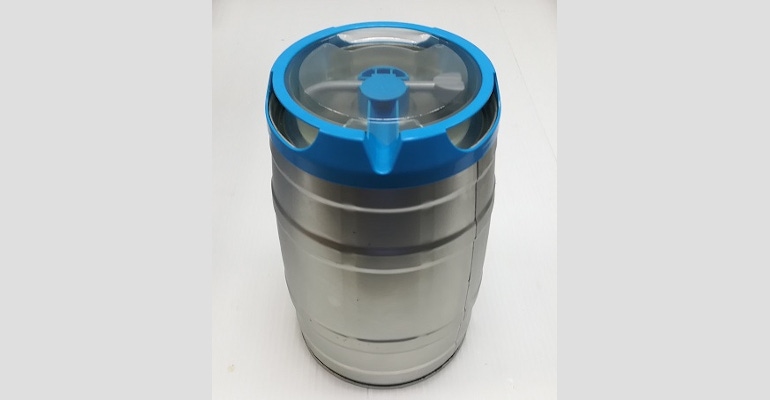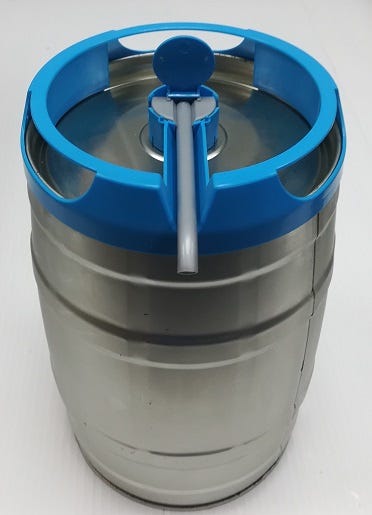Pressurized Keg Keeps Open Beer Fresh for 30 Days
With many bars and restaurants still shut down due to the COVID-19 pandemic, the new 5-liter Joseph Keg lets beer drinkers enjoy draft beer at home.

How long after you crack open a beer would you expect it to be still good to drink? 30 minutes, maybe? What if there was a package that could keep the brew tasty for more than 30 days after opening?
The new Joseph Keg reportedly maintains flavor, product quality, and carbonation levels for more than 30 days.
Holding 5 liters, the keg has a patented inside pressurized system that prevents oxygen from getting inside and spoiling the beer through oxidation. The Joseph Keg is designed to replace the gravity kegs currently in use by breweries throughout the world.
The technology, developed by The Joseph Co., is available for territorial licensing to carbonated beverage companies.
Joe Pagliaro, chief commercial officer for The Joseph Co., is on tap in this Packaging Digest exclusive interview with more details on this breakthrough packaging development.
How does the Joseph Keg keep beer fresh after opening for more than 30 days?
Pagliaro: The Joseph Keg is not a gravity keg. It contains a special pressure regulator that keeps a blanket of CO2 over the beer at a constant pressure throughout the life of the keg. This, unlike a gravity keg, prevents air/oxygen reaching the beer. This extends the shelf life by more than 30 days after the keg is breached.
How does the inside pressurized system work?
Pagliaro: As beer is tapped, the internal pressure in the keg reduces — this reduction in pressure operates a valve in the regulator to release CO2 from a capsule inside the keg. As CO2 is released, the pressure rises to a pre-set value and the regulator then switches off the CO2 supply. This keeps the pressure at approximately 1 bar (14.7 psi) inside the keg throughout the keg life.
You are marketing this as a consumer package rather than for on-premise sales, right? Why?
Pagliaro: Yes. There is nothing quite like a draft beer from your favorite bar or restaurant. On-premise sales data proves consumer demand for draft beer. But bars, restaurants, sporting events, and concert venues have been shut down due to COVID-19, essentially terminating on-premise sales.
This 5L keg (the equivalent of fourteen 12 fl. oz. servings) offers consumers draft quality beer from the convenience of their home, picnics, beaches, and more. It gives brewers the ability to still meet consumer demand for premium draft beer.
What is the shelf life before opening?
Pagliaro: We are still running long-term shelf tests but we have targeted nine months shelf life for the unopened keg.
How does the Joseph Keg eliminate excess foaming?
Pagliaro: This is a secret — but the solution to prevent too much foam is achieved in the design of the regulator and the behavior of the CO2 contained inside the capsule, and the design of the tapping device.
Do you have any customers yet?
Pagliaro: Yes. While we are under non-disclosure agreements I cannot comment to the specific customers. However, I can confirm we are under contract with global, regional, and local brands around the world.

About the Author(s)
You May Also Like




